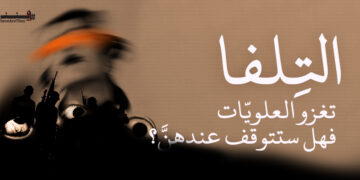A closed religious society dominated by fundamentalist thinking that rejects all aspects of civilization. This is the public space of the recent narrative film “Women Talking,” directed by Sarah Polley. She retold the novel’s narrative through the film, enriching its artistic and intellectual value. The film is based entirely on the novel by the Canadian writer Miriam Toews, published in 2018, and has the same title.
Between the literature of dystopia and the shockingly realistic literature, the reader’s imagination wavers until they are struck with terror upon learning that the novel is based on a true story that took place in the Bolivian colony of Manitoba in 2009, inhabited by the Mennonite community.
A group of men raped women at night after drugging them with a spray used to sedate animals. The ages of the victims ranged from four years to sixty-three years. Every morning, the women would wake up with clear signs of the rape on their bodies. After four years of enduring these assaults, the women broke their silence and began to talk, learning at that moment that all the women in the colony were subjected to nightly rape.
The priests’ response to the incident was that it was a demonic act or an unrestrained feminine imagination.
The film did not depict the assault scenes except for quick flashes from a terror-filled memory. Instead, it focused on the psychological and physical effects of these assaults on the women, especially after they discovered the truth and handed the attackers over to the police.
All the colony’s men left to pay the bail for the assailants and bring them back to the town, demanding that the women forgive them.
The colony’s women democratically chose eight women from three generations to decide within 48 hours about what had happened before the men returned from the city. The women gathered in an animal barn to find themselves faced with three options: to stay and forgive, to stay and fight, or to leave. They discussed the positives and negatives of each option. Debates, arguments, and disputes occurred among the film’s heroines who excelled in their roles.
The older generation was characterized by wisdom and the ability to balance opinions. Notably, Judith Ivey portrayed Grandma Agata, and Sheila McCarthy portrayed Aunt Greta, both with unmatched distinction. In the role of Salome, Claire Foy amazed us with her fierce anger and willingness to fight to the death. She portrayed a young mother to a four-year-old girl who was raped.
From this, we can conclude that this assembly represented all segments of the colony’s society, like a miniature parliament. Every choice, dialogue, and suggestion made by the women was a search for possibilities. It was a political act par excellence, organically linked to the feminist struggle, as it was primarily a political struggle.
The colony’s women are characterized by an innate awareness shaped by life’s harshness, their personal experiences, and the traumas they have endured. However, their deep conversations reflect an intellectual perception that is surprising to possess. All these women are unlettered, in the scholarly sense, and are essentially simple. Yet most of their discussions raise philosophical and existential questions about human identity and the nature of faith. This elevated the film to an elite status, prompting viewers to dissect or analyze these ideas. I don’t believe the film’s director or writer overlooked this aspect, but rather, they transcended it to convey a message through their characters with nobility and strength.
The film skillfully tackled the concept of violence through an engaging narrative. It explored how to deal with violence from a feminist perspective, analyzing its nature and causes. The dialogues were smooth and carried profound undertones, particularly voiced by Una, a character portrayed by Rooney Mara. Her personality is marked by calmness and internal peace, even though she had a fair share of suffering and pain, including carrying a child resulting from her rape.
Una and the other women considered choosing to stay and confront the men, even if they were to win the battle, would be destructive. No matter its outcome, violent behavior is destructive and doesn’t build anything substantial. If they resort to violence, they must understand why they are fighting. A strategy should be devised for the colony’s future, changing the system in their favor, and the male members should accept their terms. In Una’s analysis of this concept, it became evident that men, too, were victims of the extremist religious power that molded them into this form. Still, they accepted the rules of this power and imposed them on women.
At the end of the meeting, the women concluded that their focus should be on what they want to build, not on what needs to be destroyed. Therefore, they decided to leave the colony not to become criminals and create a more just, equal, and compassionate society for themselves.
August, the only male character in the film, appeared as an educated and aware individual characterized by gentleness, sensitivity, and cooperation. He was played by Ben Whishaw, the protagonist of the film “Perfume.” The question arises: How did the women trust him and share their most dangerous secrets? Was it merely because he knew how to read and write, and they needed someone to document their meeting, or did they see in him a reflection of the ideal man within each of them?
The women’s reactions to the assaults they endured were not the same. All of them were angry, expressing their anger in various ways, sometimes leading to suicide or a change in their gender identity. Milven, portrayed by the young actress August Winter, changed her name to Betty, cut her hair, and started wearing men’s clothing in response to her trauma, perhaps as a way to distance herself from the risks of her femininity.
With deep, sorrowful voices that reflect their genuine fear, the women embodied the concept of feminist sisterhood in its purest form. These women, who don’t know how to read and write and have no knowledge of the world beyond their small town, demonstrated the highest levels of support and compassion. They attempted to heal each other’s wounds, channeled their anger and disputes into powerful energy while seeking collective salvation, and contemplated a new future together.
Brief statements captured the horror of the events and the lasting psychological and physical effects on the colony’s women. The film’s narrator, the young girl Eisha, who also experienced the pain, conveyed what lay between the lines. The women had never become accustomed to discussing their bodies. It was as if this heavy mass went unnoticed by them despite the sanctity attached to their bodies imposed by patriarchal authority and societal norms. Thus, they felt obligated to protect their bodies.
Women feel embarrassed to talk about their bodies, desires, and appearance in front of the mirror. What do they like? What do they dislike? So, when subjected to repeated assaults, they remain silent for a long time until they overcome their fear and silence and start sharing their conversations.
The religious teachings, in their spiritual essence, have transformed into a guiding constitution for women during their dialogues. If the priests employed these teachings to solidify their authority, women managed to access the spiritual core of these teachings. They diverged from the toxic structure that had been built around this religion. This granted women a unique concept, a distinct language, and a pivotal point in finding the path to salvation through the lens of faith. This compelled us to respect the beliefs of these women and honor their feelings about what they believe in.
Cinematically, the film captivated me with its engaging and visually enjoyable scenes. It took me to a space that might not exceed 15 square meters, serving as a meeting place for nine people. Most scenes were shot in this narrow space, a barn for animals. What’s striking is that despite the limited frame, I didn’t feel bored or sense scene repetition. Each cinematic shot conveys a lot visually and intellectually. The camera moved seamlessly to the extent that I didn’t even feel its presence. Still, instead, it immersed me in its lack of neutrality, making me feel like a character experiencing the true essence of the events in that barn.
The horizontal lines of light seeping through the wooden wall openings added a fascinating touch. They cast shadows on the place and the faces, resembling prison cell bars that conveyed the sense of the prisoners’ suffering. The camera work was truly impressive.
The few camera transitions from the narrow space to nature’s vast, enchanting fields are genuinely captivating. You will sense the magic and beauty infused into those moments as a viewer. The director’s choice of a subdued and unsaturated color palette creates an atmosphere of melancholy and a haunting emptiness that reflects the souls of those inhabiting it.
But why did Sarah Polley choose the animal barn as the meeting place, knowing that the original setting in the text was one of the colony’s houses? Could this be Polley’s way of indicating that some of the most significant movements of change in history have sprung from the depths of societies and the most marginalized places?
A scene that caught my attention was August hanging up drawings of the girls and the papers from the meeting on the barn’s wall. They all seemed to follow the same pattern as if they were displayed in a museum. I felt that Sarah Polley wanted to convey the idea that we are the ones who give places their value and craft their history rather than the other way around. Countless neglected areas, deemed insignificant, have been transformed by the actions of great individuals into historical landmarks and destinations for global visitors.
Sarah Polley has undeniably left her mark on the world of directing with finesse. This film rightfully earned its Oscar for Best Adapted Screenplay in 2023, and its nomination for Best Picture was well-deserved. How could it not be, when Polley herself stated, “Men have made the rules of filmmaking, and now we are changing them.” This production was a response to her feminine voice. Sarah Polley, who lost her mother at eleven and experienced sexual assault in her adolescence, delivered her film “Women Talking” with a loud outcry and a powerful slap to the face of anyone embracing a male-centric ideology.





